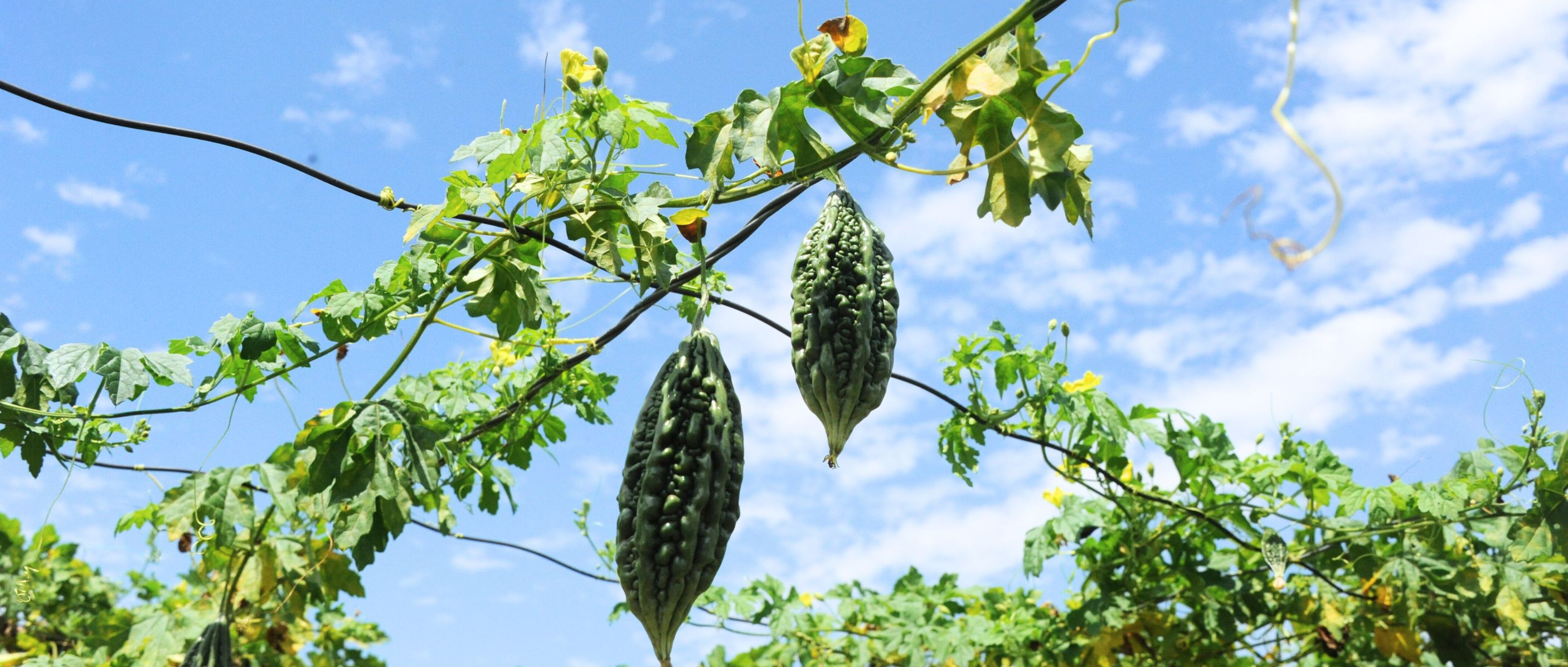In the vast tapestry of nature, countless miraculous plants remain hidden, and the momordica charantia (Momordica charantia Linn. var. abbreviata Seinge) stands out as a unique gem. Though not as strikingly beautiful as some rare flowers, it carves an important niche in both ecosystems and human life through its distinctive charm and profound value.
Belonging to the Cucurbitaceae family, themomordica charantia is a perennial herbaceous vine with a robust, branching root system. Its slender stems stretch outward, showcasing tenacious vitality, while its leaves—broadly ovate or circular in shape—emerge alternately, their thin, papery texture adorned with delicate serrated or wavy edges that seem handcrafted by nature.
The fruit is its crowning feature: spindle-shaped and covered in wart-like protrusions and soft spines, it transitions from a vibrant dark green in its unripe stage to a vivid orange-yellow when mature, resembling a glowing jewel amid mountain foliage. Its flavor is equally unique: slightly tangy when unripe, it develops a sweeter taste than common bitter melon as it ripens, with even the seed coat offering an edible, nutty crunch.
Beyond its striking appearance, the momordica charantia is a nutritional powerhouse. Packed with vitamin C, vitamin E, amino acids, and essential minerals, it offers remarkable health benefits. Vitamin C acts as a potent antioxidant, neutralizing free radicals to slow cellular aging and boost immunity, while vitamin E promotes skin health by enhancing metabolism and maintaining elasticity. Amino acids, the building blocks of protein, support vital physiological functions, and minerals like calcium, phosphorus, and iron provide foundational nutritional support. Studies show it contains 30% more vitamin C and higher protein content than common bitter melon, solidifying its status as a nutrient-dense superfood.
One of the most compelling attributes of the momordica charantia is its proven efficacy in blood sugar management, supported by extensive scientific research. Multiple bioactive compounds—including saponins, polypeptides, and polysaccharides—have been identified as key contributors to its hypoglycemic effects, operating through multiple mechanisms:
Insulin-Mimicking Action: Certain peptides in the plant mimic insulin, directly influencing glucose metabolism to regulate blood sugar levels.
Enhanced Insulin Secretion: Studies show it stimulates insulin release from pancreatic β-cells, improving the body’s natural glucose-lowering capabilities.
Improved Glucose Utilization: Researchers like Yuan Xiaoqing have isolated unique peptides (e.g., MC2-1-5) that repair damaged β-cells, increase hepatic glycogen storage, and enhance antioxidant activity in diabetic mice, reducing blood sugar by improving insulin sensitivity and inhibiting intestinal glucose absorption.
Postprandial Blood Sugar Control: The plant’s soluble fiber and saponins slow stomach emptying and suppress α-amylase activity, delaying carbohydrate digestion and blunting post-meal glucose spikes. Huang et al.’s experiments further revealed that its ethyl acetate extract activates AMP-dependent protein kinase, stimulating glucagon-like peptide-1 (GLP-1) secretion—a key target in type 2 diabetes treatment—and improving insulin biosynthesis without relying on pancreatic β-cell function, outperforming the drug troglitazone in efficacy.
The momordica charantia, a hidden treasure of the mountains, captivates with its unique morphology, nutritional density, and therapeutic potential. As modern lifestyles increasingly prioritize health and wellness, this plant emerges as a promising ally in proactive health management. Yet, as we harness its benefits, we must also protect its natural habitat, ensuring sustainable harvesting to preserve this botanical gem for future generations.
Nature’s pharmacy is vast, and the momordica charantia reminds us of the profound connections between plants and human well-being—an invitation to explore, respect, and cherish the wonders growing around us.
